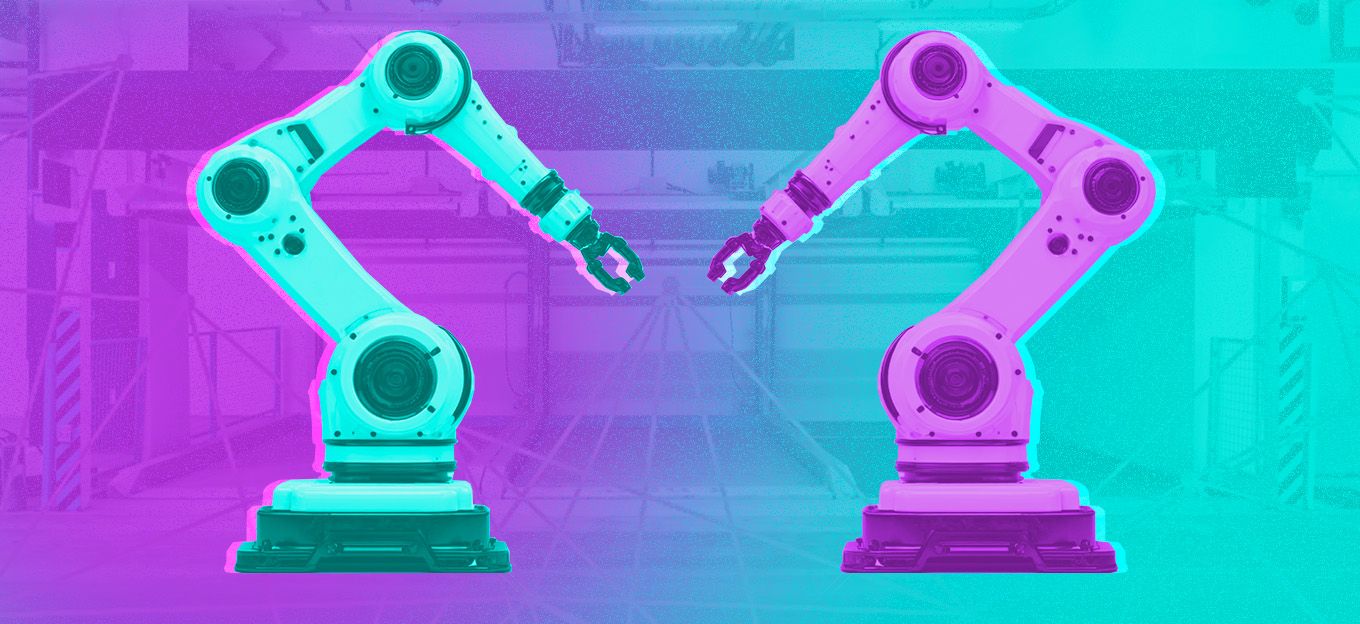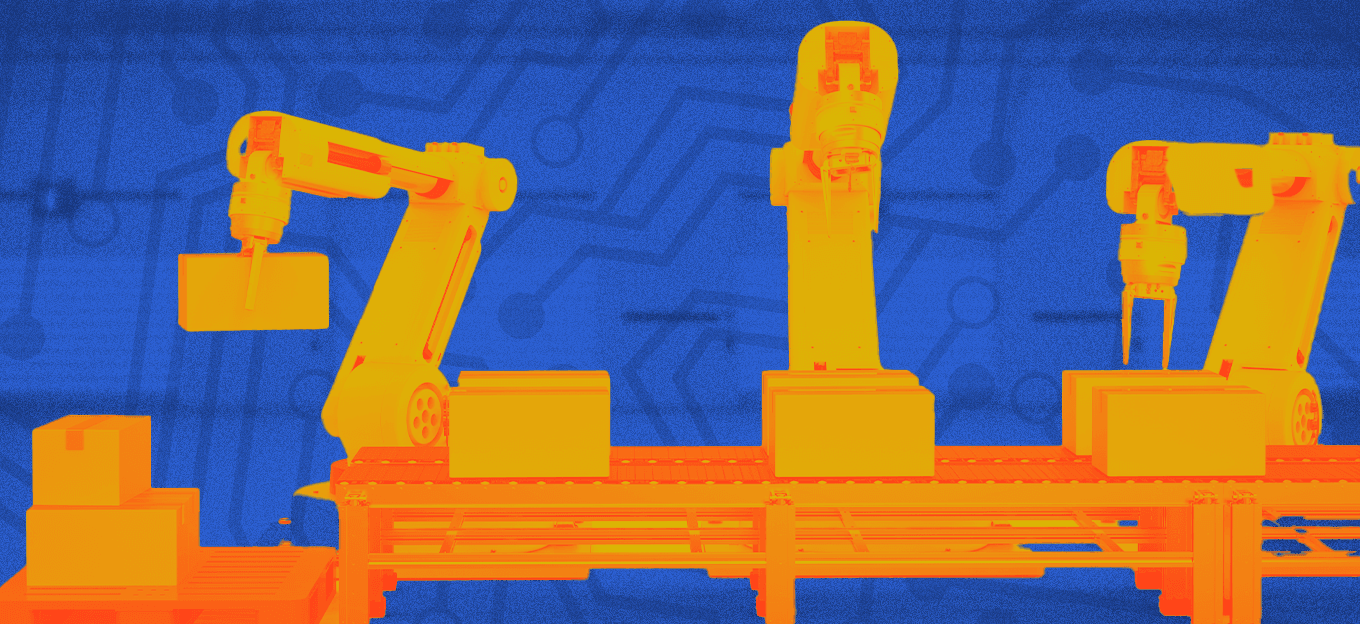A Guide to Industry 4.0 Predictive Maintenance
A Guide to Industry 4.0 Predictive Maintenance
- Last Updated: December 2, 2024
Guest Writer
- Last Updated: December 2, 2024



Predictive maintenance is a method of preventing the failure of expensive manufacturing equipment, by analyzing data throughout production to pinpoint unusual behavior ahead of time, to ensure appropriate measures can be taken to avoid extended periods of production downtime.
Before the widespread adoption of IoT in manufacturing settings, professionals and machine operators would have to frequently schedule maintenance at regular intervals in order to identify what might need to be repaired.
What Makes Predictive Maintenance So Crucial?
It is thought that half of all manually scheduled machine maintenance is actually futile. Considering that this form of maintenance also takes up a tremendous amount of resources, time and productivity, it’s no surprise that many production professionals have taken a step away from this approach to focus on Industry 4.0 methods.
Utilizing IoT tech to monitor the condition of machinery can help manufacturers lower costs, maximize output and improve the quality of their product.
Utilizing IoT tech to monitor the condition of machinery on the production line, streamlines maintenance schedules, and harvests real-time data, meaning that manufacturers can lower costs, maximize output, and improve the quality of the product.
Preventive vs Predictive Maintenance
Manufacturing companies have been performing preventive and predictive maintenance long before there was even such a thing as the internet. However, it’s still important to understand the difference between the two kinds of maintenance.
Preventive maintenance relies on visual inspection, along with routine machinery health checks. However, this can only offer a limited scope into the working condition of a piece of equipment, since engineers can only repair what has malfunctioned and not what will malfunction.
Predictive maintenance uses an analytical approach; utilizing real-time and historical data to highlight where a machine is not performing as it should so that it can be repaired ahead of time.
How Predictive Maintenance Works
In order for a predictive maintenance solution to be used to monitor a piece of equipment, the following kit is required:
• Sensors to collect machine or product data.
• Data transfer is required to allow the communication system to move secure data from the machinery to a data storage system.
• Data storage system is the central hub that collates and stores information, whether onsite or through the cloud.
• Predictive data is analytical data that applies algorithms to the stored data to better understand how a machine should work and what it might be doing before a failure. This data is then fed to the operator in the form of alerts and insights.
• Root cause analysis is used by engineers and specialists to investigate and determine which action is the most appropriate one.
Data on the machinery is transported from the sensors to a central storage area using communication pathways. Data from MES systems, are then integrated into a central data storage system to provide a further level of production machinery data.
Once predictive data is applied to this, it is able to offer insights on how to reduce the downtime of a machine.
To effectively roll out predictive maintenance systems, users must first assess what failure might mean for each piece of machinery. This should pull together manufacturing assets, sensor data, communication procedures, predictive analytics and dashboard alerts.
Using a visual system, engineering teams will be able to view the production line in graphical form. This should include data flow, dashboards and the logic of the system – where a set of rules will monitor and alert upon discovering anomalies – to produce a blueprint on how a system should operate effectively.
From here, any historical machine data or predictive analytics can be applied to the blueprint to predict the behavior of the machine before a failure.
Advantages of Predictive Maintenance
When a business uses predictive maintenance, there are two massive advantages for that organization, including:
A Reduction in Machine Down Time – Automating strategic maintenance schedules, has been proven to reduce maintenance time by 20-50%, while simultaneously decreasing associated maintenance costs by around 5-10%.
Maintains Efficiency – Relying on analytical data to improve the efficiency of the machinery, means that unnecessary maintenance is no longer necessary. This means that the life cycle of the machinery is extended, and any issues uncovered by the technology can be scheduled for repair when the machine isn’t in use.
How Can Manufacturing Use Predictive Maintenance?
Over the past few years, manufacturing businesses have implemented predictive maintenance solutions in a range of scenarios, from factory-wide implementation to the monitoring of a single, critical machine part.
For organizations that produce products on a mass scale – such as food or toys, for example – predictive maintenance is a fantastic way of reducing the defects of a product and thereby eliminating waste.
This is known as Quality 4.0, and by implementing such a solution, those on the factory floor can see when the production of defective products will exceed their threshold, and what may be the cause.
For those that produce parts and machinery, common use of predictive maintenance is to set the technology to monitor and inspect the condition of moving apparatus and motors. Productivity, power, health status and internal wear are all monitored.
Common Industry Predictive Maintenance IoT Approaches
There are two commonly used approaches to predictive maintenance, which are machine learning and rule-based.
Ruled-Based
This is also known as condition monitoring. This approach uses sensors which collect asset data and send alerts based on predefined settings, once a specific rule has been activated.
Rule-based maintenance means that production teams must work closely with engineering and customer services departments to understand the causes and factors which may eventually lead to machine failure.
Once these causes have been established, a virtual model of the system can be created, which maps out how the IoT components may determine these causes and behaviors.
For example, if temperate readings dip above or below that which has been deemed acceptable, the system can send a warning to the dashboard, which will then be picked by someone who can address the problem before further damage has occurred.
Although this method does provide some level of automatic and predictive maintenance, it is still reliant on the understanding of which mechanical and environmental occurrences must be monitored.
Machine Learning
Industrial AI can be applied to predictive maintenance in the same way it can for pretty much all other aspects of the manufacturing process.
Although, in relative terms, we are only just beginning to understand and use such technology, many operations across the world are seeing the enormous benefits of machine learning.
AI is the ideal partner to work alongside predictive maintenance solutions.
It provides users with an array of techniques that help them to understand and analyze extensive collections of data, harvested during manufacturing, to allow them to produce accurate, actionable insights that help to maintain production levels.
These are more commonly known as Machine Learning Algorithms.
What Are Machine Learning Algorithms?
There are two main types of AI and machine learning used in predictive analytics – supervised and unsupervised. Both of which are useful depending on the scenario, and the availability of tests and historical data.
Highly advanced AI algorithms in predictive maintenance are used to understand how a machine should behave. This information is then used as a yardstick to identify real-time fluctuations in performance. These algorithms must have historical or test data and output data to analyze things such as temperature, pressure, engine speeds and component condition.
As IoT continues to progress, businesses are beginning to adopt an industry 4.0 approach for the manufacturing sector. The advancement of AI and ML will assist in predictive maintenance, ultimately providing businesses with an extreme advantage over anyone not moving towards industry 4.0.
The Most Comprehensive IoT Newsletter for Enterprises
Showcasing the highest-quality content, resources, news, and insights from the world of the Internet of Things. Subscribe to remain informed and up-to-date.
New Podcast Episode

Moving Past the Pilot Phase in IoT and AI
Related Articles





